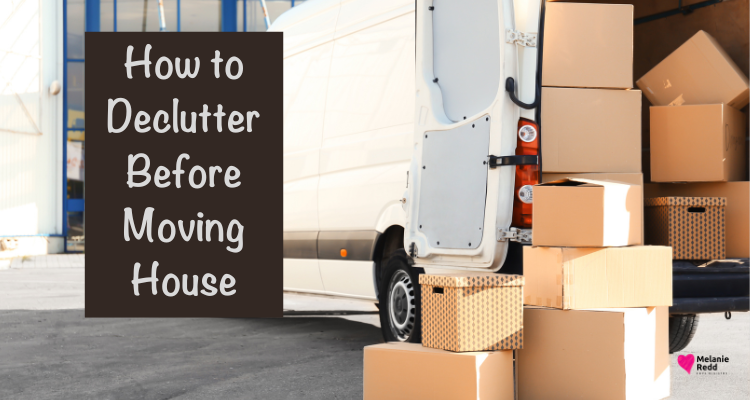How to Declutter Before Moving House

How to Declutter Before Moving House: A Streamlined Approach for an Easier Transition
Moving to a new home is a significant undertaking that often brings with it a mix of excitement and stress.
For many, transporting a lifetime’s worth of possessions can seem overwhelming. A key strategy to manage this stress and create a smooth transition is decluttering and hiring a moving company to work with.
It would be best to hire local, so Prosper movers if you’re in the greater Dallas area, for example, as they will know the locations, roads, and laws and regulations the best. By sifting through belongings and deciding what to keep, sell, donate, or discard, individuals can reduce the volume of items to move and simplify the packing process. process.
Decluttering before a move is not only practical but also provides a fresh start on the new residence.
It’s an opportunity to reevaluate what is truly necessary and cherished. Starting the decluttering process early, ideally, 1-3 months in advance, allows ample time to sort items thoughtfully and avoids the rush and potential regret of last-minute decisions.
Also, a decluttered space results in fewer boxes reduced moving costs, and less time spent unpacking and organizing in the new home. It leads to an environment where one can fully enjoy the new space without the burden of unneeded clutter.
With a systematic approach, decluttering can make the transition to a new home a less daunting and more enjoyable experience.
How to Declutter Before Moving House – Developing a Decluttering Strategy
A successful decluttering strategy before moving involves setting clear goals, drafting a meticulous timeline, and applying structured sorting methods. Each step should align with achieving a streamlined decluttering process.
Also, you may want to seriously lessen your carbon footprint when you move. You can learn how to do this as you go through the entire process of moving.
Setting Decluttering Goals
Decluttering begins with establishing concrete goals. These should include the desired end state of the living space and the items that they want to take to the new residence.
Even more, one should envision the future home. For assistance with managing waste during the process, visit Eagledumpsterrental to explore convenient dumpster rental options. This vision will guide the entire decluttering effort.
Creating a Decluttering Timeline
Next is to plan a strict timeline. Decluttering takes time, and it should start well in advance of the move—ideally, one should allocate at least one month prior. They can create a checklist to track progress and ensure no area is overlooked. Splitting the work across days or weeks will reduce the pressure and increase effectiveness.
How to Declutter Before Moving House – Four Week Schedule
Weeks 1 & 2
Begin decluttering less-used rooms first.
Use the 20/20 Rule for minor items.
Week 3
Tackle main living areas.
Sort belongings systematically.
Week 4
Finalize decluttering, and focus on essentials.
Prepare a “Necessity Box” for moving day.
Sorting and Categorization Methods
For the sorting phase, implementing a system is crucial. The three-box method—keep, discard, or donate—is a straightforward strategy.
Additionally, having rules such as the 20/20 Rule—if it costs less than $20 and can be replaced within 20 minutes, consider letting it go—helps in making quick decisions. Staying organized is key, and categorizing items as they sort makes the process efficient and manageable.
Effective Decluttering Techniques
Effective decluttering streamlines the moving process, reduces stress, and can even reduce moving costs by decreasing the volume of items to transport. It involves making decisions on items to keep, sell, donate, or discard, with an emphasis on minimizing possessions before relocating.
How to Declutter Before Moving House – The Four-Box Method
This technique simplifies decision-making by categorizing items into four distinct actions:
Keep Essential items to be used regularly at the new residence.
Sell items in good condition that are no longer needed, which could be sold for extra funds.
Donate items that are no longer wanted but could benefit someone else.
Toss Items that are broken, damaged, or no longer usable that should be purged. One systematically moves through each room with four boxes designated for these categories, ensuring that only valuable or functional items remain.
Room-by-Room Approach
For a thorough purge, it is recommended to tackle one room at a time, following these steps:
First, empty: Remove all items from their places to get a full view of what is available.
Second, assess: Determine the significance and use of each item, especially for sentimental pieces.
Third, organize: Sort items back into their places, grouping like with like after having decided what to keep.
This step-by-step process prevents feeling overwhelmed and promotes a more manageable approach to decluttering each space.
20/20 Rule for Minimalism
A minimalist approach to decluttering, the 20/20 rule states:
If it costs less than $20 to replace and takes less than 20 minutes to find and purchase, one may consider not keeping it.
The rule is particularly helpful for downsizing possessions that are infrequently used but often kept “just in case.” It aids in overcoming the hesitation of letting go of items by focusing on their actual utility and ease of replacement.
Executing the Declutter
Decluttering before a move can exponentially decrease stress and workload. Key steps include targeting heavily cluttered areas first, separating emotional attachments from practicality, and digitizing where possible to reduce physical bulk.
Tackling High-Volume Areas
In the quest to declutter, one should begin with the rooms prone to accumulating the most items, namely closets, basements, and garages. Family members often store rarely used belongings in these areas, including out-of-season clothes, old books, and forgotten toys. A systematic approach involves:
‘1. Sorting through items by category, like clothes and toys.
2. Assessing each item's usefulness or joy it brings.
3. Allocating a discard pile for donations, sales, or recycling.
How to Declutter Before Moving House – Dealing with Sentimental Clutter
Sentimental items such as photographs, heirlooms, and personal letters can be challenging to part with. Here are strategies to handle such items thoughtfully:
Evaluating the significance of each item and considering if its memory outweighs its physical presence.
Digitizing photographs and documents to preserve memories without the physical clutter.
Reducing Paper and Digital Clutter
Paperwork and digital clutter can be overwhelming. Here’s how to simplify:
Sorting through physical papers, shredding old documents, and keeping only necessary records.
Organizing digital files by creating structured folders and deleting duplicates.
Opting for electronic statements to prevent future accumulation of paper waste. For each section of clutter, one should make definitive and timely decisions to maintain progress and efficiency throughout the decluttering process.
Preparation for Moving Day
Efficiently preparing for moving day involves setting up a robust system for packing and labeling, planning for the transfer of bulky furniture, and conducting a thorough final sweep. Each of these steps helps ensure a smooth transition to the new home.
Packing and Labeling Systems
A structured approach to packing expedites unpacking at the destination. It is crucial to have adequate supplies such as boxes, packing tape, and protective packing materials.
Moreover, categorizing items and boxing them according to room simplifies the unpacking process. They should label boxes clearly with the content and destination room using a color-coded system or descriptive labels. A separate essentials box should contain items needed immediately upon arrival at the new home such as toiletries, a change of clothes, and basic tools.
Handling Large Items and Furniture
When dealing with furniture, it’s imperative to use the right tools to disassemble any pieces that are too large to move in one piece. Wrapping furniture in padding and securing it with packing tape can protect it during the move. They should contact a removal company early to handle large items if needed and to fit the cost into the overall moving expenses. Considering the layout of the new home is also critical, ensuring that each piece will fit through doorways and into the intended storage space.
Final Sweep Before Moving
Individuals should reserve time for a final inspection of the old home to ensure nothing is left behind. Checking closets, drawers, and storage spaces for overlooked items is part of this process. Emptying the freezer and ensuring that perishable items are appropriately disposed of helps leave a clean slate for the new occupants. It’s also the ideal time to gather any remaining packing materials or tools that may be scattered around the house, which could be needed for setting up in the new location.
Were you encouraged by what you read?
Then, would you share this article with a friend, co-worker, or family member?
Or, maybe you can send it to a friend or family member?
This blog occasionally uses affiliate links and may contain affiliate links.
Additionally, Melanie Redd is a participant in the Amazon Services LLC Associates Program.
This is an affiliate advertising program designed to provide a means for sites to earn advertising fees. These are earned by advertising and linking to amazon.com.
Also, for more on my disclosure policy, click HERE.
© Melanie Redd and Hope Ministry, 2024. Unauthorized use and/or duplication of this material without express and written permission from this blog’s author and/or owner is strictly prohibited.
Further, excerpts and links may be used, provided that full and clear credit is given to Melanie Redd and Hope Ministry.
Please give appropriate and specific directions to the original content.



0 Comments